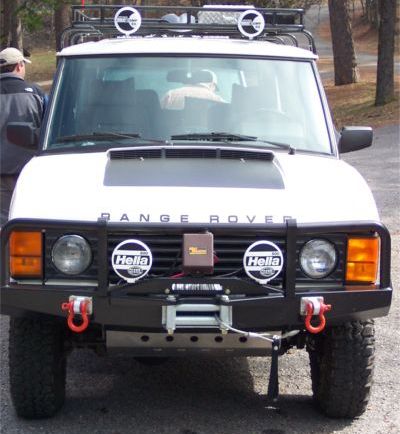Hi there ARB, I have recently purchased a 2010 Mitsubishi Challenger and I’m very happy with the vehicle. It performs very well off road and having a factory rear diff locker gets me places that other cars can’t!
But on occasion, when I push my luck, I get stuck. As with any car, there are factory ‘tow points’ on the car, but the prevailing opinion amongst other 4WD owners is to never use factory tow points for recovery purposes.
I’ve asked at a number of places, only to be told that it’s not possible to put front recovery points on the vehicle. I’ve also been told that it’s a common problem on many modern 4WD vehicles.
So what is the deal? What’s the low-down on recovery points? Do you have any suggestions on how we are able to make it safe to recover our vehicles from the front?
Thanks for your assistance!
- Ross
Hello Ross,
Thanks for that excellent and topical question. It is an unfortunate fact that no 4x4 vehicle available in Australia comes with a factory recovery point. There is a good reason for this that all owners should understand.
When we talk of 4x4 vehicle recovery, we are referring to the use of either winches or kinetic energy recovery (snatch) straps. Winch recovery using either single or double line pull methods exert significant forces on mounting and recovery points, however the loads exerted by recovery straps are far more significant.
If you consider the engineering challenge here, you begin to understand what sort of recovery point we should all be looking for. That challenge is to ensure that the recovery strap is always the weakest link in the ‘recovery train’ as we call it.
We definitely do not want anything the strap is attached to (or with) failing and being catapulted about at high speed. Many people have unfortunately been killed around the world from such failures.
A recent death in Queensland saw their government legislate a set of standards for recovery straps, and these have now been adopted nationwide and are now a mandatory standard all straps must comply with.
All very good, however, there remains no such standard, guidelines or regulations on which manufacturers or users can base an appropriately rated recovery point. Typical of governments who want to be seen to be doing something, they chose the wrong product to regulate. It’s what the strap is attached to that is the issue.
Thankfully, there are standards for the shackles we all use to attach straps, however their rating system is based on lifting gear standards, and the safety factors in lifting gear mean that the rating is one fifth of the failure point. If we apply that rule to recovery points for even the lightest snatch strap, we need a recovery point that will survive a load of 40 tonnes. And I can tell you there is no vehicle body or chassis that could ever survive the test load of 40 tonnes. Furthermore, nobody could afford to buy the recovery point even if it was possible.
For many years ARB incorporated recovery eyes on our bull bars or their mounts and tested these as part of the winch load test process we go through on every bar. Unfortunately we had to steer away from that concept as we found too many users were buying the larger truck application recovery straps in the mistaken belief that a bigger and harder to break strap was better. This raised the risk of breaking these points in careless recovery operations.
Yes, there are small numbers of commercially made rated recovery points, but rated to what? They themselves may be strong enough to pass a load test in a laboratory environment, but what about the structure of the vehicle they are mounted on? The fact is that modern 4x4 vehicles are ever more lightly built and some present real challenges to mount bull bars on, let alone a recovery point that could be subjected to loads over 10 tonnes and an angled direction of pull at that.
Some two years ago ARB began a process of examining this perplexing subject with the goal of establishing a new Industry Standard and a range of correctly engineered and tested, correctly rated recovery points. And to make things even harder for ourselves, we set out to test both the recovery points and the chassis section they are mounted to.
These will be substantial devices, unique to each model vehicle and no two will look alike. Pricing is likely to be in the $200-$300 range due to the complexity and physical mass of the devices.
This program has been a long and gruelling one, with several chassis and prototypes destroyed in the process, but a lot of valuable information has been gathered. Having said all of this, there’s good news and bad news for you, I’m afraid. At the time of writing we are producing the first production run of the range and it is for the Ford Ranger, and following that will be Toyota 70 Series LandCruiser, Nissan GU Patrol and Toyota HiLux.
We will launch with this range and gauge reaction before beginning the development of further applications.
If it goes as I hope, the product will be well received by the market and we will quickly be under pressure for more applications. The next stage would include the Triton/Challenger.
Sorry for the long-winded answer, but I hope you now have a better understanding of the issues surrounding this subject.
- Greg Milton, Manager
National Products & Services


